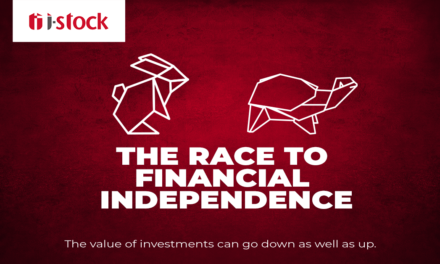“How the systems behind pensions work, how I can manage it and be prepared when it becomes my only source of income.”
Retirement should be a time where you live the life you want. A time to enjoy hobbies, to explore new places, to tackle new challenges and to make the most of every moment. But to do this, you’ll probably need to ensure you have a steady income once you can no longer rely on a working salary. A pension is the most popular way to build this. There’s no set retirement age in the UK anymore, so as long as you’ve done your maths and have established how much you can survive on from what age, you could retire when suits you best. Realistically however, although you can access your pension at any age from 55, you will probably need to hang on a little longer if the money is to last for your whole retirement.
If you’ve made sufficient National Insurance contributions during your working life, you qualify for the State Pension. This however is a small amount and is only paid when you reach State Pension age, which is constantly on the rise. Having your own pension could be the support you need to get you through retirement.
1) How do I work it out?
Retirement can be almost a third of your life, so you’ll most likely want to make sure you can support yourself to live comfortably during your later years. So, one of the first things you want to establish is how much do you need to do this? Saving enough during your working life could help to provide you with a comfortable income during retirement, and there are many ways to work out how much you will need.
2) What are the limitations?
It’s good to aim to contribute a proportion of your wages every month to your pension, and if you’re workplace has an auto-enrol scheme, then this is something you won’t need to spend too long thinking about. However, bear in mind that the most you can pay into a pension each tax year is £40,000 and if you exceed this, you won’t receive tax relief on the extra amount, and you’ll be charged. The lifetime allowance to withdraw is £1million before you trigger any extra tax charges.
3) Workplace pensions – what is it?The most commonly discussed pension is the workplace pension scheme which is a legal requirement for all businesses to provide to their employees. Having one of these in place can be a great benefit for staff and an excellent attraction to those looking to join. Often workplace pensions come with ‘auto-enrolment’, which means staff between 22 and state pension age, are automatically included on the scheme. Staff are free to opt out if they so choose, however employers must not pressure them into doing this in any way.
4)When should I start?
The best time to start a pension is undoubtedly when you’re young. Granted you may not even be thinking that far into the future, focusing much more on the holiday you need to book with your friends, or those new shoes you saw in the shops last week. However, it’s key to not ignore what’s going on with your pensions, as this is the money you will need to live on during your later years. By activating this early, even with small contributions could be crucial – you can always increase your payments as your income increases. These early years could be when your disposable income is at its highest, with limited bills to pay or households to run. By making early contributions to your pension, you could find you benefit more than most from compound interest.
5) What is compound interest?Compound interest makes a sum of money grow at a faster rate than simple interest, because in addition to earning returns on the money you invest, you also earn money on top of those returns at the end of every compounding period. This means you may not have to put away as much money to reach your goals.
When it comes to compound interest and its perks, it’s easier to consider particular scenarios to establish the impact early contributions can have.
Saver 1 starts their pension at 20 investing only £50 a month whereas Saver 2 starts their pension when their 40, saving £100 a month. If the interest rate averages at 4%, Saver 2 is likely to have a pension pot of about £36,500 at 60. Saver 1 however is likely to have nearly £60,000 at the same age. When you start saving can outweigh the amount you save.
But compound interest isn’t the only good thing about a pension; the lack of tax on them is one massive highlight. Once you make a payment, the government will repay tax at the highest rate; effectively meaning you are ‘given’ some extra money! Regular taxpayers contribute 20% of their money, so in the example provided above, everytime Saver 1 pays in £50, an extra £12.50 gets included. Money arrives in the pension as if it has not been taxed, making the total contribution £62.50. With this tax relief included, Saver 1 would actually have a fund of £72,800.
Saver 2 however could be a higher rate taxpayer paying 40%, making their £100 payment about £166. Even with this advantage, his overall pension after a year will still be less than Saver 1 at £60,600.
Just from starting their pension sooner, a modest earner receiving half as much tax relief could still end up with a bigger pension pot than a high earner. When it comes to saving your pension, time really is money.










We are a group of volunteers and starting a brand new scheme in our community. Your web site provided us with useful info to paintings on. You’ve performed a formidable task and our whole neighborhood will likely be thankful to you.
Thanks for the auspicious writeup. It in reality was once a entertainment account it. Look complicated to far delivered agreeable from you! By the way, how could we be in contact?
Today, I went to the beach with my kids. I found a sea shell and gave it to my 4 year old daughter and said “You can hear the ocean if you put this to your ear.” She put the shell to her ear and screamed. There was a hermit crab inside and it pinched her ear. She never wants to go back! LoL I know this is entirely off topic but I had to tell someone!